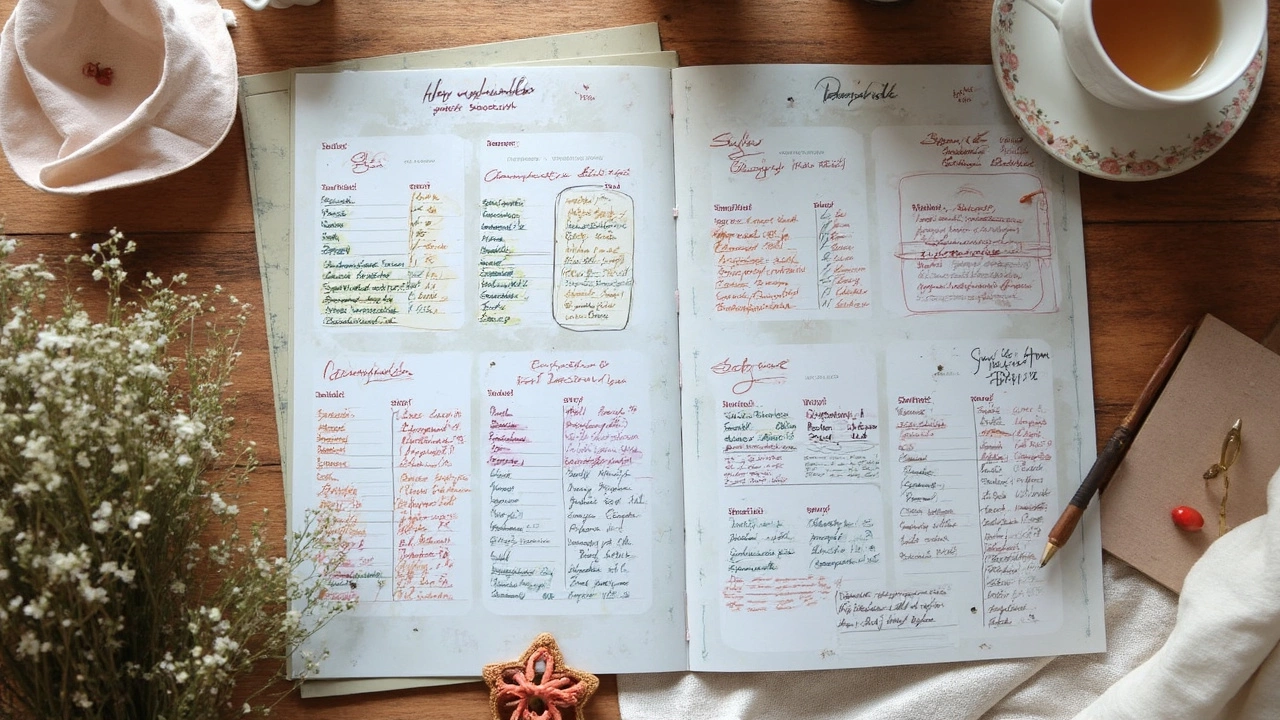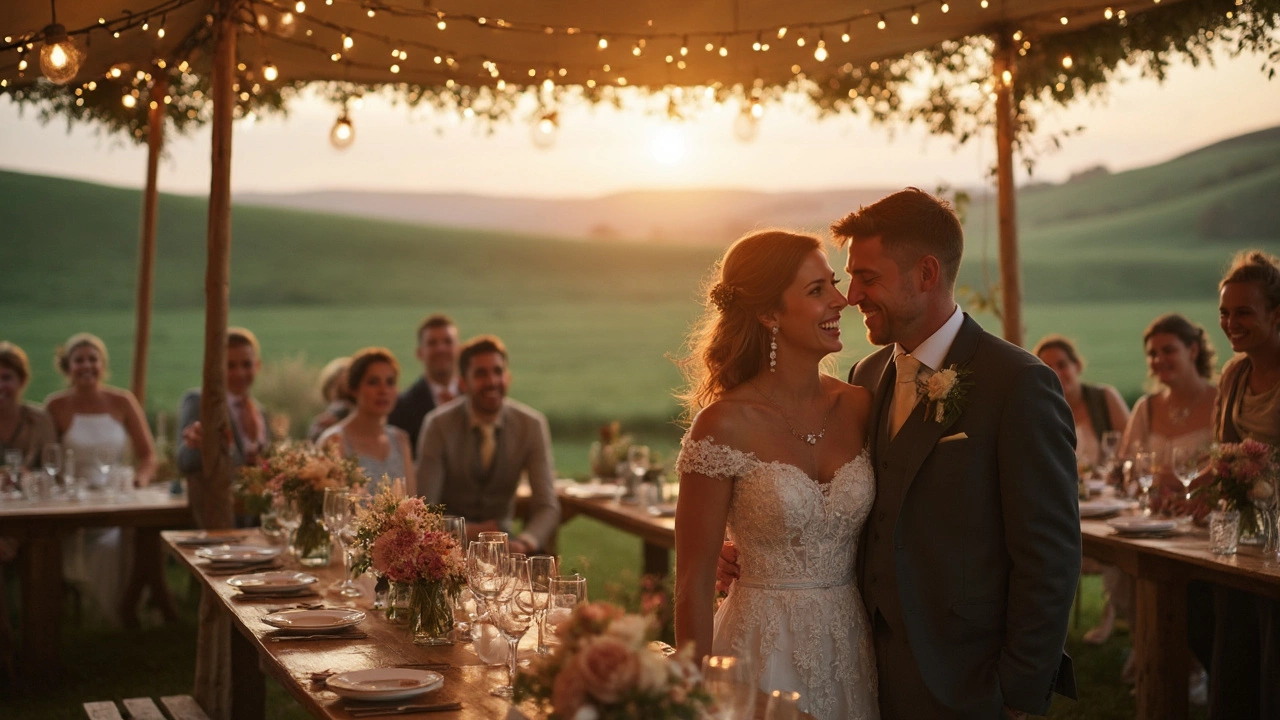Ever noticed how fast wedding costs balloon out of control? According to a 2024 report by The Knot, the average U.S. wedding now clocks in at $33,000, and that’s before you even add the honeymoon. But here’s the secret: with some creative planning and a good dose of discipline, a gorgeous celebration is totally within reach for a fraction of that. That five-figure budget? It can stretch further than you think when you chase value instead of bling. You don’t need to skip the cake, the dancing, or the magic. You just have to be smart about where the money goes—and ruthless about what you can live without. So grab your dream board, round up your crew, and let’s see what $10,000 can actually buy you in the wedding world today.
Building Your Budget Blueprint: Where the Money Really Goes
First things first, decide what matters most. If you care more about lively photos and killer food than designer shoes, that’s where your money should go. About half your funds will land in three spots: venue, food, and photography. Everything else—attire, flowers, music, that adorable custom signage—has to squish into what’s left.
Check out this real-world sample breakdown from couples who made it work on exactly $10K—they weren’t magicians, just savvy shoppers:
| Category | Estimated Amount |
|---|---|
| Venue (inc. ceremony & reception) | $3,500 |
| Food & Drink | $2,000 |
| Photography | $1,200 |
| Attire (dress, suit, accessories) | $800 |
| Decor & Flowers | $700 |
| Music/Entertainment | $500 |
| Invites & Stationery | $250 |
| Misc (favors, gifts, extras) | $350 |
| Officiant | $200 |
| Transportation | $500 |
| Total | $10,000 |
Notice there’s no line for “day-of coordinator,” “welcome boxes,” or “fireworks display” here. Prioritizing means cutting out the fluff—be honest with yourself right from the start. If you’re both on the same page about spending, you’ll avoid stress later when those champagne dreams try to creep back in.
Do your research on average local costs. Grab those wedding calculators online but tweak maybe a little less for attire or favors if you know your priorities. Don’t forget about taxes, service fees, or tips—they can eat into your total fast (plan 15–20% wiggle room, just in case). And keep a detailed spreadsheet or app to track every charge. If you fall a bit over in one area, offset it somewhere else—flexibility is key if you want to have your cake and eat it, too.
Venue Hacks: Think Outside the Ballroom
The single priciest line item for most couples is the venue—but you don’t have to sign your life away for a six-hour rental. Go for venues that are naturally beautiful, offer built-in charm, or don’t require much decor. Public parks can be rented for a sliver of the cost of a country club. Community centers and historic halls are super affordable alternatives and can feel surprisingly chic with café lights and the right music.
Be bold about your date and timing. Weddings on Friday evenings or Sunday afternoons usually come with a discount, sometimes up to 30%. Consider getting married during the off-season (January–March for most climates), when venues are hungry for business and will negotiate harder. Morning ceremonies with brunch receptions slice the food and bar bills, too—who doesn’t love mimosas and pastry towers?
If you have access to a friend’s backyard, rooftop, or family property, your costs can drop by thousands instantly. But be realistic: you’ll need backups for weather, restrooms, and parking. Oftentimes, these so-called “free” venues require extra spending on tent rentals or portable bathrooms, so read the fine print and get everything in writing.
Look for venues that provide necessities—tables, chairs, linen, and staff—bundled into their price. When you don’t have to source everything à la carte, you save both money and time. Some breweries, art galleries, and restaurants even waive the venue fee if you meet their food and beverage minimum. If you can host your budget wedding and your reception in the same spot, boom—one rental instead of two.

Food and Drink That Won’t Blow Your Budget
Here’s where most budget plans wobble: feeding people. Caterers average $70–$100 per guest, but you don’t have to play by those rules. Aim for 50–80 guests instead of the “standard” 120. With a smaller group, the money stretches faster—each upgrade is more affordable, and you can actually hang out with your guests.
Change the format. A buffet or food station is way cheaper than plated service and still feels festive. Food trucks let you skip the fancy staff and rigid courses, plus they’re a crowd-pleaser (tacos, grilled cheese, BBQ, or even wood-fired pizza). Or have your favorite local restaurant cater family-style dishes—Italian, Indian, or Mediterranean feasts are delicious and cost-effective.
Skip the open bar. No, really. Offer a couple of specialty cocktails, beer, and wine, and you’ll easily save hundreds. Signature drinks can be named after the couple (bonus points for a personal story!) and batch-made before the event. Ask your venue if you can supply your own alcohol—they might just charge a modest corkage fee. And if your crowd isn’t big on booze, a mocktail bar with fresh juices and creative garnishes wows everyone and slashes costs even more.
If a friend or family member loves baking, a homemade cake can be a memory and a gift. Or go for a dessert buffet—mini donuts, brownies, or cupcakes—which costs less and lets people try a few treats. Just make sure your venue is fine with outside desserts and check local health department rules.
Don’t feel guilty about not having every “tradition.” Passed hors d’oeuvres, his-and-hers signature stations, and late-night snacks are nice but completely optional. Focus on a hearty meal, a couple of crowd-pleasing drink options, and desserts people will actually want to eat—no dry fruitcakes on this menu.
Photography, Decor, and Details That Pack a Punch
The last chunk of your budget goes to all the extras that make the day feel personal. Don’t panic: even small gestures and simple details leave a huge impression. The trick is to zero in on what you’ll remember most years down the line.
Book a photographer for fewer hours (6–7 instead of 10), or hunt for rising talents who are building their portfolio. You still get professional edits, just without paying for “getting ready” shots at sunrise or blurry dance floor photos after midnight. Extra tip: skip the pricey album and just get digital files so you can create your own book later.
Florals can easily eat $2,000 if you’re not thinking ahead. Use in-season blooms and fill out arrangements with greenery. Trader Joe’s or local farmer’s markets sell fresh bundles on the cheap, and you can assemble bouquets with your wedding party—YouTube is your friend. Focus spend on one or two wow pieces: a bridal bouquet, maybe ceremony arch swags, and fill tables with candles or budget-friendly runners.
DIY decor gets a bad rap, but done right, it feels original. Collect mismatched thrift store vases, repurpose string lights from your backyard, or print photos of you and your partner for table numbers. If you’re not the craft type, borrow items from friends who got married before you—cake stands, lanterns, and signs are usually gathering dust in someone’s garage.
Music can chew through dollars fast. Instead of a full band, hire a DJ for four hours or ask a friend to MC. If you really want to tighten the belt, grab a Spotify premium playlist, rent a sound system, and assign a tech-savvy cousin to keep things moving.
Digital invites are the best-kept secret of the budget wedding world: they’re quick, eco-friendly, and cost close to zero. Greenvelope and Paperless Post let you add music, RSVP tracking, and personalized touches. If grandma insists on paper, order a small printed batch for older relatives and keep the rest digital.
Little details matter, but small doesn’t mean cheap. Limit guest favors, gifts for the wedding party, and extra rentals. A handwritten note is way more memorable than a dusty bottle opener or bubble wand. And always ask vendors for package deals or off-peak rates—you’re more likely to get a yes than you think.
Planning a wedding on a $10,000 budget doesn’t mean sacrificing style or meaning. It’s about putting the spotlight on joy, connection, and the things you actually care about. These choices—trimming the guest list, pouring creativity into decor, sharing a killer meal—are the stories you’ll tell years later. And nobody will remember you didn’t spring for chair covers.

